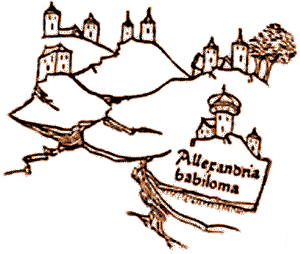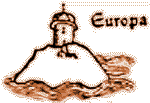
THE UNIVERSITY DIVIDED INTO FOUR
 The University is, of course, a microcosm itself, representing the known universe.
Undergraduate study in a typical liberal arts curriculum is divided into four
categories: Arts, Humanities, Social Sciences, and Physical Sciences. These
divisions trace their ancestry to the seven liberal arts of the late-medieval
universities. Today, university campuses are often organized to express the
hierarchy of these categories of knowledge.
At the University of California, Santa Barbara, for example, the principle four
categories of academic disciplines are physically located on the campus according
to their relationship to one another. The Physical Sciences are given a privileged
position just inside the east entrance to the campus. The Arts are housed to the
west on the far side of the campus, and the Humanities and Social Sciences are
balanced in the middle on either side of the walk from the administrative complex
to the main library.
The University is, of course, a microcosm itself, representing the known universe.
Undergraduate study in a typical liberal arts curriculum is divided into four
categories: Arts, Humanities, Social Sciences, and Physical Sciences. These
divisions trace their ancestry to the seven liberal arts of the late-medieval
universities. Today, university campuses are often organized to express the
hierarchy of these categories of knowledge.
At the University of California, Santa Barbara, for example, the principle four
categories of academic disciplines are physically located on the campus according
to their relationship to one another. The Physical Sciences are given a privileged
position just inside the east entrance to the campus. The Arts are housed to the
west on the far side of the campus, and the Humanities and Social Sciences are
balanced in the middle on either side of the walk from the administrative complex
to the main library.
Naturally there is a certain amount of debate about where some areas of study
belong: is art history in the Arts or the Humanities? And where should fields such
as law, or education, or physical sports be placed?
 As interdisciplinary study becomes more common, barriers between these divisions
are breaking down (at UCSB, Humanities and Social Science have recently been moved
together into one building.) Dividing knowledge today into four categories is just
as arbitrary and problematic as the four-fold divisions in the sixteenth century
were.
As interdisciplinary study becomes more common, barriers between these divisions
are breaking down (at UCSB, Humanities and Social Science have recently been moved
together into one building.) Dividing knowledge today into four categories is just
as arbitrary and problematic as the four-fold divisions in the sixteenth century
were.
This section within our contemporary curiosity exhibition was placed just inside the entrance to the room. Since the viewer was likely to explore this section first, it served as a foundation for the order of the rest of the room, encouraging the viewer to compare the ways different disciplines made use of the various objects.
The four main branches of academia were each represented by a case of objects;
some objects were common to more than one group, but were used for different
purposes.
 |
{Essays} {Gallery} {Microcosms} |
 |